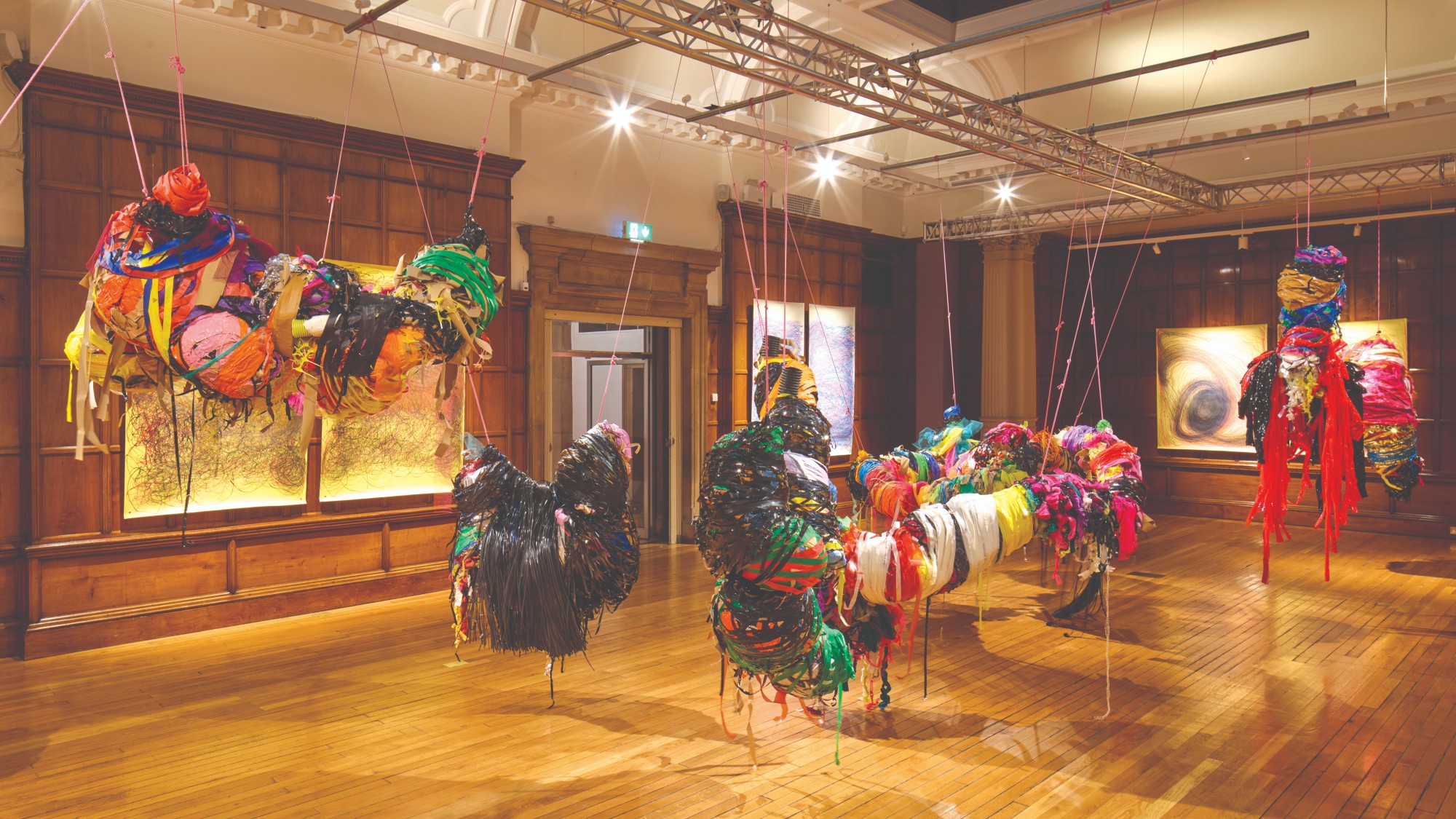Health & Science
Brain teasers don’t make you smarter; Hooked on tanning salons; OMG, txt is king; Counting undersea creatures
Brain teasers don’t make you smarter
Recent years have seen an explosion in “brain games” that, when played a few hours a week, purport to sharpen your overall cerebral reflexes, like a fitness regimen for the mind. A study by British researchers suggests that such “training” does help—but only if your goal is to score better on the brain teasers. Otherwise, the games provided no discernible boost to memory, planning, general reasoning, or similar cognitive skills. “The expectation that practicing a broad range of cognitive tasks to get yourself smarter is completely unsupported,” neuroscientist and study author Adrian Owen tells BBC.com. The study asked 11,000 volunteers, all viewers of the British TV show Bang Goes the Theory, to do brain-teaser workouts for at least 10 minutes a day over a period of six weeks; a control group was asked to research trivia questions by simply surfing the Web. Participants did get better at the mathematical and logic games, but their skills didn’t transfer to tasks beyond those they’d specifically trained for. “Statistically, there are no significant differences” between subjects “who played our brain-training games and those who just went on the Internet for the same length of time,” Owen says. Some scientists wondered whether the six-week study period was long enough for brain games to produce meaningful results. But Clive Ballard of the Alzheimer’s Society, which helped fund the research, said the study shows that “staying active by taking a walk, for example, is a better use of our time.”
Hooked on tanning salons
The Week
Escape your echo chamber. Get the facts behind the news, plus analysis from multiple perspectives.

Sign up for The Week's Free Newsletters
From our morning news briefing to a weekly Good News Newsletter, get the best of The Week delivered directly to your inbox.
From our morning news briefing to a weekly Good News Newsletter, get the best of The Week delivered directly to your inbox.
People who ignore cancer warnings to patronize tanning salons may be motivated by more than the prospect of bronzed skin. They could be addicted to artificial sunlight, a new study suggests. Researchers at Memorial Sloan-Kettering Cancer Center surveyed college-age students about their indoor-tanning habits, using modified questionnaires usually used to assess alcohol and drug abuse. Of 229 tanners, more than a third met criteria for addiction: They were more likely to be anxious, had higher rates of substance abuse, and visited a salon anywhere from 40 to 100 times a year. “They know it’s bad for them,” study author Catherine Mosher tells the Los Angeles Times. “This is not about appearance. The way they cope with a mood disorder may be to tan excessively.” Researchers think the solar high may be caused by relaxation-inducing brain chemicals called endorphins, which are produced under exposure to ultraviolet light. “People think it’s just the warmth that feels good,” says Wake Forest University dermatologist Steven Feldman, who has also studied tanning addictions. “It’s like a small narcotic hit.”
OMG, txt is king
Talking on the phone is so 20th century. A recent study by the Pew Research Center found that, although 75 percent of teens now own a cell phone, most kids use phones to text, not to talk—except when they have to deal with their parents. Of the 800 teens surveyed, two-thirds said they’d rather text a friend than call, but 78 percent were more likely to call their parents than to text. All told, the average teen handles 50 text messages a day and just five phone calls; girls log closer to 80 texts per day. For teens, texting is “more efficient” because “they don’t have to go through the preamble and niceties” of a phone conversation, study co-author Amanda Lenhart tells TechNewsDaily. Texts can also be sent more discreetly and, with the absence of background noise, without giving away “too much information on their whereabouts,” the study noted. Nonetheless, the teens surveyed said they often opted to call their parents, since parents don’t understand—and frequently are appalled by—texting’s peculiar grammar and lingo, such as “LOL” and “OMG.”
Counting undersea creatures
A free daily email with the biggest news stories of the day – and the best features from TheWeek.com
Evan as the U.S. Census Bureau counts the American population, marine scientists are conducting a census of their own—of every living thing in the ocean. More than 2,000 biologists working with the international Census of Marine Life are nearing the completion of a 10-year project that’s discovered more than 5,000 new forms of marine life, including 16,000 species of sea worms, hundreds of tiny crustaceans—and, most numerous of all, microbes. Scientists now estimate that the seas may contain a billion different kinds of microbes; all told, the number of marine microbes may total nonillion—a number represented by 1 followed by 30 zeroes. Microbes may constitute 90 percent of the seas’ biomass, with an aggregate weight equivalent to 240 billion African elephants. Large, whitish mats of multicellular microbes can be found on the seafloor throughout the world, and one such mat of bacteria, off the coast of Chile in the Pacific, is about the size of Greece. Scientists say they were astonished by the diversity and sheer amount of life in the seas, even at depths once considered too dark, cold, and hostile. “Such findings make us look at the deep sea from a new perspective,” researcher Pedro Martinez Arbizu tells the Associated Press. “Far from a lifeless desert, the deep sea rivals such highly diverse ecosystems as tropical rain forests and coral reefs.”
-
 House GOP revolt forces vote on ACA subsidies
House GOP revolt forces vote on ACA subsidiesSpeed Read The new health care bill would lower some costs but not extend expiring Affordable Care Act subsidies
-
 ‘Kast’s victory is a political and ethical earthquake’
‘Kast’s victory is a political and ethical earthquake’Instant Opinion Opinion, comment and editorials of the day
-
 Turner Prize 2025: ‘artistic excellence’ or ‘cultural nonsense’?
Turner Prize 2025: ‘artistic excellence’ or ‘cultural nonsense’?Talking Point Work by the four artists nominated for this year’s award is on display at Bradford’s Cartwright Hall